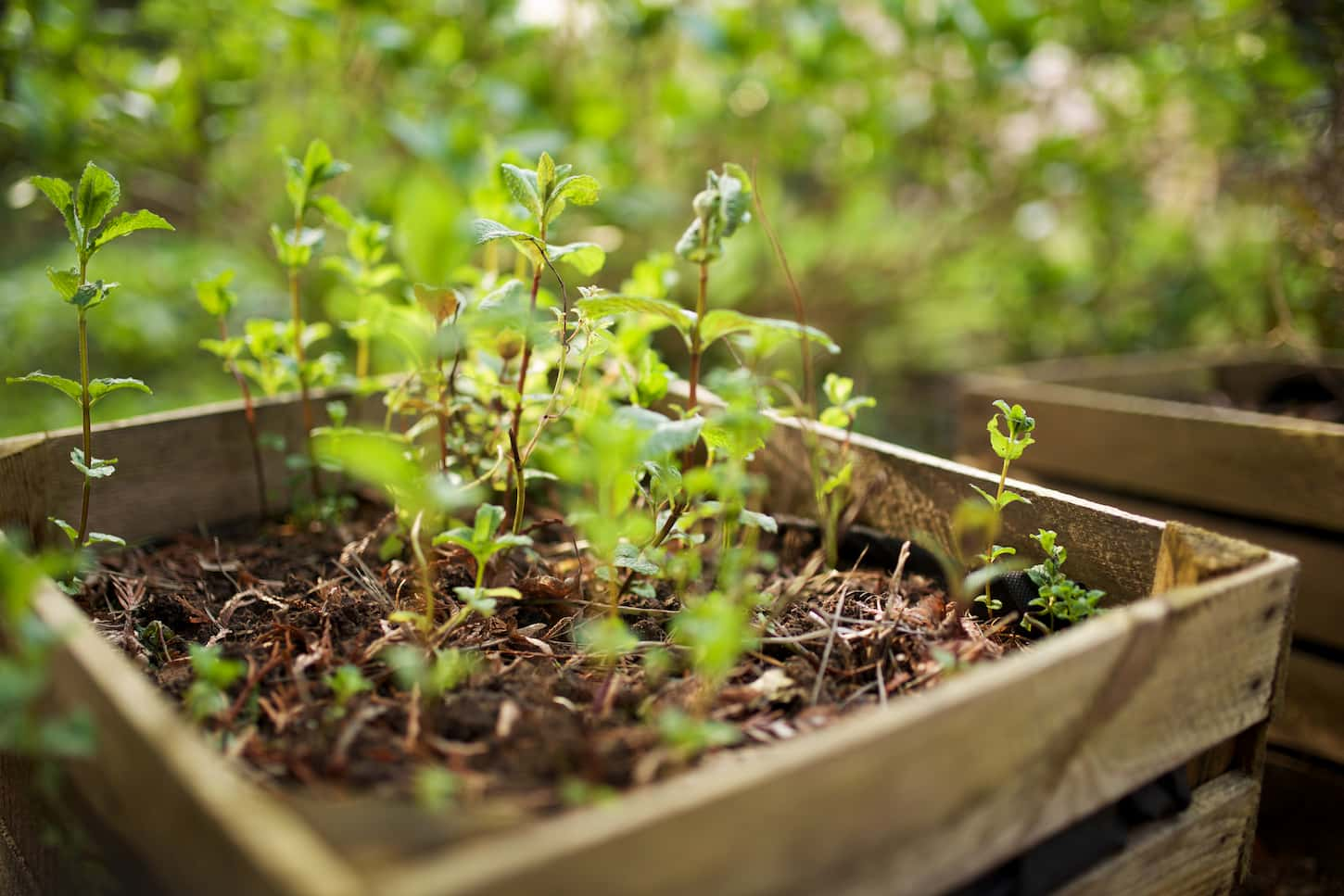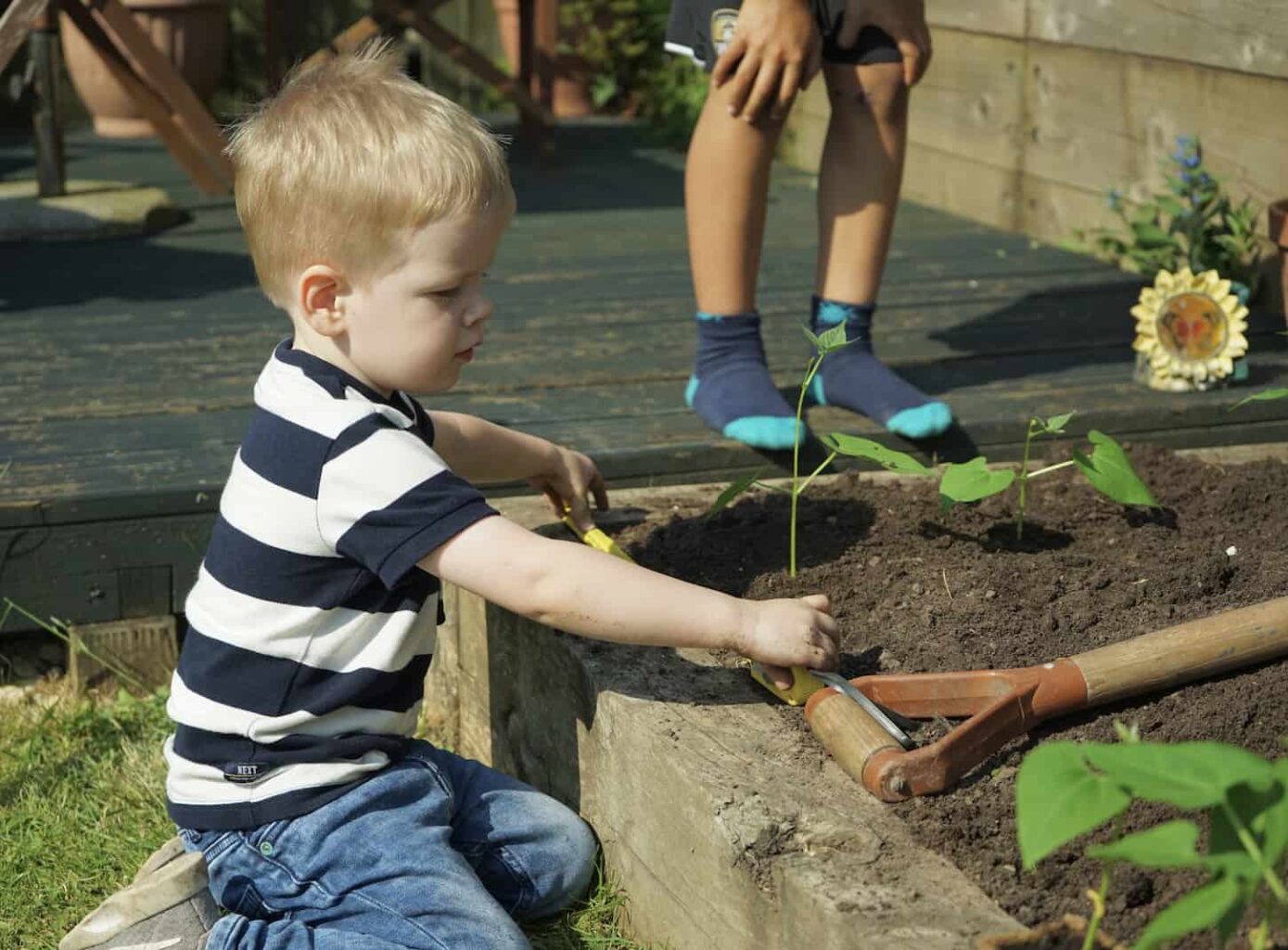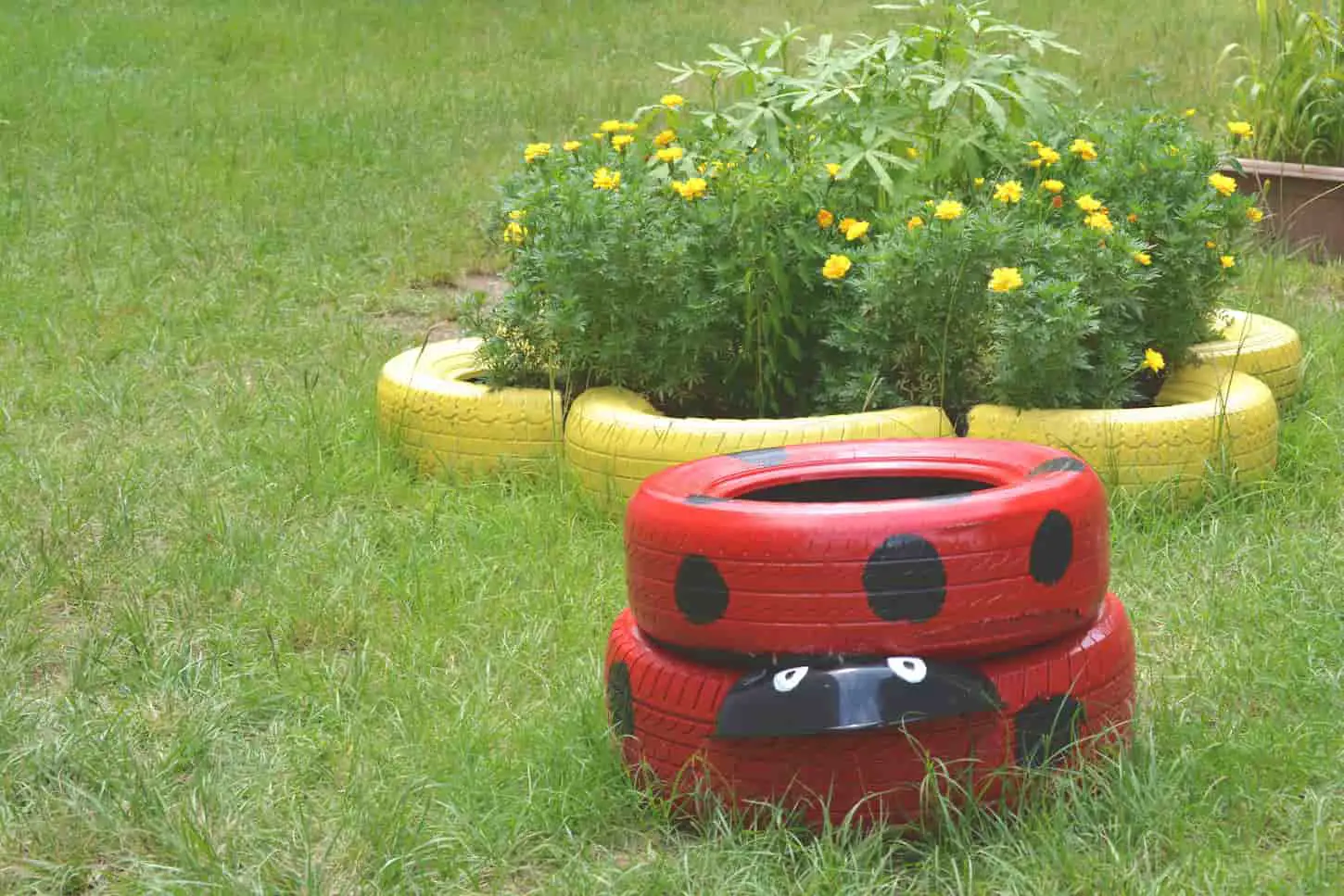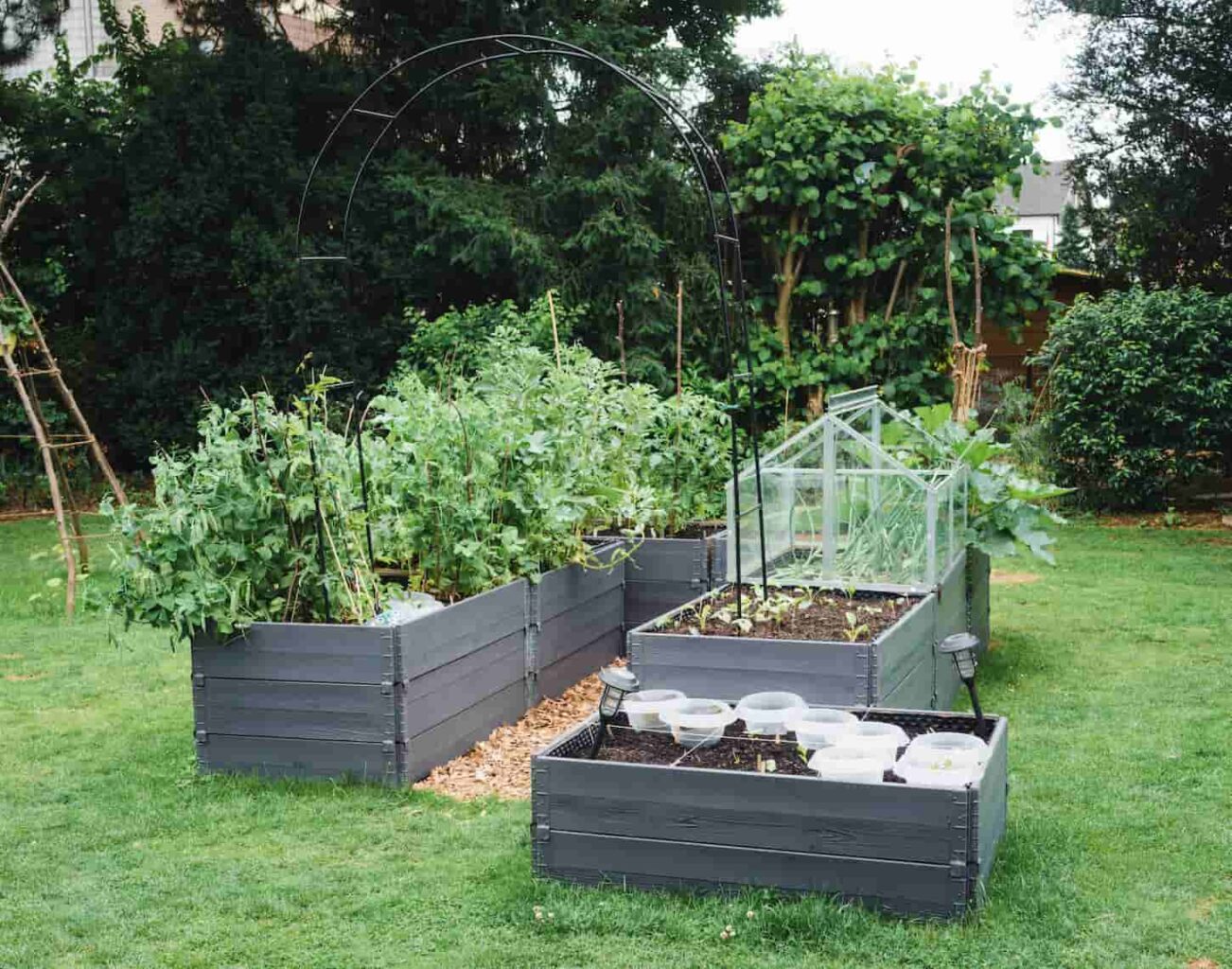Using raised beds and boxes is a practical way to grow plants and vegetables in your garden. I’ve put a crazy amount of time into researching which materials to build grow boxes out of in our garden.
Some materials aren’t suitable for growing vegetables because they can release toxic substances into the soil and food. Other grow box building materials are more heat and rot-resistant than others, though most building materials don’t otherwise have a significant effect on the garden.
The material you use for your beds is important. Below we’re going to take an in-depth look at some of the best ones you can use. This way, you can make an informed decision when it comes to choosing the right kind of materials for your beds.

What is Raised Beds and Boxes?
A raised bed or box is a space that you create above the earth for growing plants. They’re usually made from wood, plastic, or metal. And they’re perfect if you have poor earth in your garden or no earth at all. In a raised bed you have more control over your plant’s growing environment.
When you use a raised bed or box, the earth will be completely fresh, and uncontaminated. Which overall leads to less weeding and gives you more control of nutrient content and pH levels.
Raised beds are easy to maintain and you can make them as tall or as short as you like. Tall boxes are perfect for people with mobility issues who can’t bend down. As well as this, raised beds can look attractive in your garden, and overall, it’s easier to keep pests out of raised beds.
What Can You Use to Make a Raised Bed?
There are several, practical materials that you can use for making raised beds. The most common one by far is wood, but you can also use plastic, stone, and metal.
Below, we’re going to explore the pros and cons of the three most popular materials for making raised boxes.
Plastic
Plastic is a good material to use because it’s lightweight. This means it’s easy to work with and also, you can move the structure around easily if you need to. As well to this, plastic doesn’t rot so it’s long-lasting and durable against water and insects.
Another good thing about plastic is that it’s readily available and it’s relatively cheap. The most resistant plastic for a raised box is High-Density Polythene (HDPE). Plastic is moisture resistant so it’s the best choice if you live in a humid area.
However, plastic isn’t great for taller beds because it’ll bend outwards under the weight of the soil. Plastic can also crack due to sun exposure over time.
Wood
Wood is the most popular choice when it comes to creating raised beds. This is because it’s completely natural, organic, biodegradable, and environmentally friendly. And as well as this, it’s widely available and good for construction. You can cut wood easily to customize your bed or box.
But because wood is organic, it will rot over time so wooden beds are among the least durable options. However, you can choose harder, more rot-resistant woods for your frame, but these are generally more expensive. Oak and pine wood will rot quite quickly whereas cedar, redwood yew, and cypress are the most rot-resistant. These types of wood can last for many years.
And why not just treat the wood first to make it more durable I hear you ask? Well, this is because any chemicals in the wood will gradually seep into the earth and contaminate your vegetables. So if you want to treat the wood or waterproof it then makes sure you use something non-toxic like natural oils for example.
To get around this problem, some growers will line the wooden bed to protect the soil. But in this case, you must choose the liner carefully because plastic also contains chemicals.
Metal
Metal is becoming increasingly popular as a choice material for raised beds. And this is mostly due to its high durability. Metal is strong, long-lasting, and won’t buckle under the weight of the soil, especially if it’s corrugated. This means that metal is a great choice for taller beds.
As well as this, scrap metal is readily available and generally inexpensive. And some growers like to use galvanized metal which is rust-resistant.
One of the downsides to using metal is that it heats up quickly in the sun and it will rust if it’s not galvanized. As well as this, it can be hazardous because of its sharp edges so it’s not suitable for areas where there are small children and animals. And unless you buy a kit, then you might need a specialist to put a metal raised bed together.

Stone
Of all the building material choices for raised beds, stone is by far the most durable. The big downside to using stone is that it’s heavy. If you’re buying stone for a garden bed, it can also get quite expensive.
Thankfully, there are less-expensive stone options, like concrete form-molded stones and bricks. This is what we built our last retaining wall out of, and it’s worked great. It also looks amazing.
The other big downside to using stone, though, is that you really need to plan a lot in advance. Moving a stone (or brick) wall is labor-intensive. Definitely measure twice before doing any building.
Things You Shouldn’t Use for Raised Beds
When it comes to choosing materials for your beds, you might be tempted to use cheap, abundant materials such as tires and railroad ties. But unfortunately, these aren’t good materials for your beds for several reasons.
- Railroad Ties – Using railroad ties for your beds isn’t a good idea because they’re treated with harsh chemicals such as creosote. And these chemicals will contaminate your soil and make it toxic.
- Tires – You shouldn’t plant fruit or vegetables in tires. This is because tires contain heavy metals that can leach into the soil over time. And these are harmful to you and your plants.
- Protected or Chemically Treated Lumber – The problem with old wood and pallets is that often they’ve been treated with chromatic copper arsenic (CCA). This is a highly toxic substance that will leach into your soil and contaminate your plants. So unless you can be sure that the wood or timber hasn’t been treated with any toxic preservatives or substances then you shouldn’t use it for your beds.
That being said, sometimes a tire just makes the perfect place to plant some potatoes. As they grow, being able to stack them up and add dirt is just an amazing way to go.
Just be aware that doing so isn’t ideal – and that it’s possible for various chemicals to leech out into the soil and/or your food as a result.

Do the Building Materials of Raised beds and Grow Boxes Affect Soil Temperature?
The basic materials of raised beds or boxes will have only a small effect on the temperature of your soil. But when you grow in a raised bed, you have more ways to control the soil temperature. You can do this by layering the earth or adding a groundsheet for example.
If you add a groundsheet to your raised beds, this will help them to retain heat. And if you fill your bed with layers of different types of earth, these layers will trap air which will help to keep it warm. When you use layers for insulation, make sure to cover the top of your box with a thick layer of mulch.
If you want your boxes to retain heat then you should fill them with darker types of earth and compost. And you should paint the outside of your boxes a dark color because dark colors absorb heat. Alliteratively, you should paint your boxes a light color if you want them to stay cooler in the summer.
And the beauty of raised beds is that they’re really easy to cover. So you can create a warm environment by covering them over with polythene for example.
How Do Different Materials Used in Grow Beds Affect Soil Temperature?
Raised beds, no matter their building material, vary from regular soil temperature by between 1-3 degrees. Grow box building material alone won’t extend or shorten a gardening season without a cold frame box.
Wood, metal, and plastic are all very different from each other when it comes to insulating the soil in your beds.
- Wood remains at a more constant temperature than metal or plastic. And it’s made up of natural layers, so overall, wooden boxes are the best at insulating the soil.
- Metal, on the other hand, is a good heat conductor. Metal bed frames will heat up and cool down with the weather. So, in the summer plants that sit close to the edge of metal containers may dry out quicker because of the heat generated from the metal.
- Plastic isn’t a good heat conductor; thus, it won’t heat up or cool down dramatically like metal. And it doesn’t give your beds much insulation either. This means that plastic will have the least effect on the temperature of your soil.
I talked to dozens of neighbors and friends with grow boxes. All told, all raised beds seem to dry out faster than any gardens in the ground. They also vary 1-2 degrees Fahrenheit from the regular soil temperature.
But beyond those facts? All raised beds seem to be otherwise dang comparable with regards to soil temperature.
How Much Warmer or Colder is the Soil in Raised Beds?
The soil in raised beds will be 1-3 degrees warmer in the summer and 1-3 degrees colder in the winter. However, in the winter even though the earth might get a bit colder at night, it heats up quickly during the day to a comparable or warmer temperature.
In the spring and summertime, generally raised beds are warmer. This is because the sun’s rays reach not only the surface of the soil but also penetrate the sides of the box.
And it’s the opposite effect in the winter with the cold. The raised beds will be exposed to cold air from the top and sides. Thus, becoming colder than the earth. However, as soon as the air starts warming up the beds will warm up faster than the earth.
Therefore, you’ll often see raised beds thaw out quicker after snow or frost.
Can Using Different Materials in Grow Beds and Boxes Lengthen or Shorten the Growing Season?
The materials used in raised beds can affect the length of the growing season, but only in a matter of a few days without a cold frame. As we’ve discovered, even though raised beds do get cold, overall, they’re generally exposed to more heat.
The temperature of the earth is what triggers plants to start growing in the spring. So, this means the extra warmth in grow beds will stimulate seeds to start growing. Thus, giving you a head start with the spring growing season.
Cost of Building Raised Beds or Grow Boxes out of Various Materials
When it comes to building raised beds then there are several costs that you must consider: materials, labor costs, filling the beds with earth or compost, and the cost of buying seeds or seedlings. Some of these costs can be offset with a DIY attitude.
If you use reclaimed materials and build the box yourself then you can make one with a small investment of as little as 100 dollars. But if you want a custom-designed, handcrafted box made from special wood or corrugated metal, then you can expect to pay more than $2000 dollars in some cases.
These days, you also have the option to buy easy-to-assemble raised bed kits. These come in a range of different colors, designs, and materials that suit every budget. Plastic raised beds are usually the most economical to buy.
If you want to get the best DIY prices with the ease of a kit, there are partial kit options, too. Many kits will have corner pieces – so that you can use those to anchor your grow box using whatever building material you want.
Just to give you a quick idea on cost, though, here are links to some ready-to-build grow boxes on Amazon, just so you can compare prices without having to go anywhere just yet.
- Wood planter (8 foot by 2 foot) on Amazon. Price is starting from about $70 at the time of publication – click the link to see current pricing.
- Plastic vinyl garden box (4 foot by 2 foot) on Amazon. The price starts at $80 at the time of publication. Make sure you click the link to see current prices.
- Galvanized raised garden bed kit (8 foot by 4 foot) on Amazon. The price at the time of publication is about $60, but make sure you click the link to see current prices.
Those prices may be better or worse than your local hardware, though, so make sure you do some shopping around. If you’d like to head over and shop at Home Depot, feel free to use that link to see what prices you can get there for a kit.
How Big Should I Make a Raised Bed or Box?
Raised garden beds should never be more than 4 feet across so that the middle is accessible. Raised garden beds can be as long and as short or tall as the building materials allow.
You can make your beds as long as you want but bear in mind that long boxes will need extra support. Ideally, you should have support steaks every three to four feet. Otherwise, the pressure of the soil will eventually push the sides of the box out.
How deep you build your grow box is all down to personal preference and the plants you want to grow. The average raised bed is between 12-14 inches deep. But with shorter beds, you’ll have to prepare the ground more.
Based on my research and experience, if you want a no-till raised bed that’s more than about two feet (24 inches) tall, the stone will be your best option.

Key Takeaways
As you can see, the materials you use for raised beds and boxes is important. And if you want the best for your plants, you must make sure that the materials you use don’t contain any toxic substances. On top of this, different types of materials can affect the temperature of the soil.
So, with the right materials, you can increase the temperature of the earth in your raised beds and get a head start on the growing season. And in case you’re wondering? We’re still totally deciding what to build our grow boxes out of. I’m leaning towards using stone, but we’ve still got a couple of other projects to do before we get to the grow boxes.
Resources
Learning from your own experience is essential, but learning from others is also intelligent. These are the sources used in this article and our research to be more informed as homesteaders.
- Baker, Thomas. “All About Raised-Bed Gardens.” This Old House, 10 Apr. 2019, www.thisoldhouse.com/gardening/21019438/how-to-create-raised-garden-beds.
- Brotak, Ed. “Soil Temperature Is Critical to Garden Plants.” Horticulture, 28 Apr. 2021, www.hortmag.com/smart-gardening/soil-temperature-is-critical-to-garden-plants.
- “Do Raised Beds Actually Prolong Your Growing Season? (Market Garden Forum at Permies).” Permaculture Forum, 2018, permies.com/t/76862/raised-beds-prolong-growing-season.
- Vereecken, Kris. “Ask a Master Gardener: Raised Beds Are Warmer in Summer, Colder in Winter.” Duluth News Tribune, 22 June 2019, www.duluthnewstribune.com/lifestyle/home-and-garden/2720513-Ask-a-master-gardener-Raised-beds-are-warmer-in-summer-colder-in-winter.
- A huge thank-you to all of my neighbors, family, children, and friends who fielded countless questions and queries to go measure soil temperature in their gardens.
